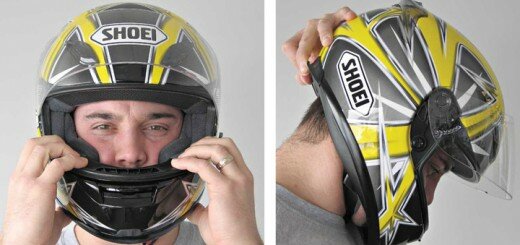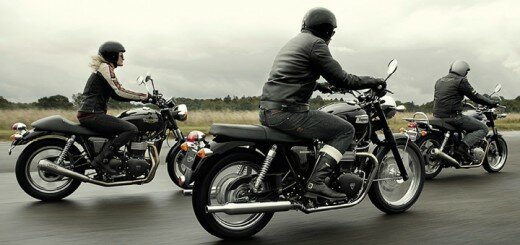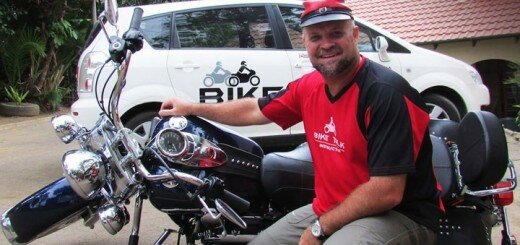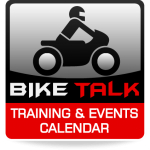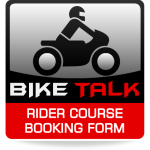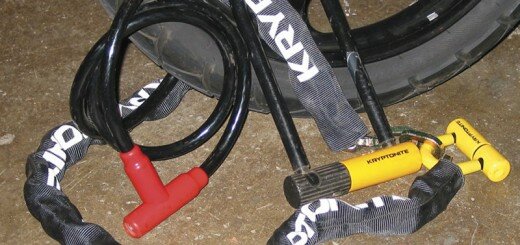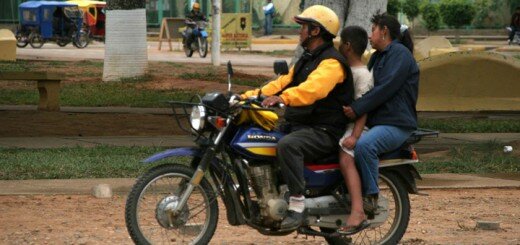The car insurance industry regards the young driver as being a specifically “high risk” group – do you believe the same applies to the young biker?
I don’t believe the insurance industry will categorize young road users any different, just because they have a different mode of transport. No indeed, young riders are at a bigger risk because of their mode of transport just like the more mature rider on our roads today. Young road users have spent most of their lives in the passenger seat of their parent’s vehicle or public transport, most totally oblivious to road use and driving manner; therefor operating on our roads with very little traffic savvy, and a lot less experience than their parents. The insurance industry regarding young road users as a “high risk” group – Young riders even more so!
Is there a significant difference between the young male rider and the young female rider when it comes to an attitude towards safety?
From my years training I can state with confidence, that female riders are a lot more concerned with safety and getting it right, than what their male counterparts would like to admit to. This includes females from all race groups in SA. Although both gender groups want to learn, I find that male riders tend to slip up sooner due to ego and other contributing factors such as arrogance, anger and good old negligence. Male riders have a more laid back approach where female riders are more focused or determined to stay alive.
What are the biggest factors making young riders a dangerous group on two wheels?
Well I’m going to put the blame on the parents for this one, especially the parents who don’t ride motorcycles themselves. First there is no emphasis on wearing the right kit (protective clothing), and most of these kids are taught by their friends or family who ride or have ridden a 100 years ago. They are not just a danger to other road users, but even more, a danger to themselves. Road Safety is not a subject at school, so it has to be taught at home or through an external institution like a Rider Academy or Driving School. My statistics show that not enough parents will send their kids for rider training, and I find that they have to be prompted with hard facts before they do. The same goes for the riding kit; they feel it is too expensive to fit them out from head to toe and then allow their kids to ride with only a helmet as protection. “No it’s okay my boy/girl, just jump on the bike quickly and run to shop for me. Yeah, shorts, slops, t-shirt is fine but don’t forget your helmet!” Where’s the love in this? Our youth needs to be educated on Road Safety from a very young age, or it can turn into Road Rage just like dad. The other factors are; spend what you can afford on riding kit (yeah, skip the smokes or the dop for a week), and please send them for rider training. Most riding academies are very affordable, and some dealers will even award a free or subsidised riding lesson with the purchase of a new motorcycle; Honda does for one.
The most important factor is attitude and that goes hand-in-hand with discipline – It starts at home!
Is rider distraction a risk among young riders?
Young riders are no more distracted than adults while operating a motorcycle on our roads. Most riders, young and old, are somehow distracted by either the place they just left or the place they are going to. Emotions can be distracting, and we all know, when emotions get hold of you it clouds your thinking. I see more and more kids walking around with their ears (minds) plugged into a Mobile Device, listening to music and now when riding their motorcycles. This imposes on the attention the mind needs to focus and assess constantly changing traffic conditions. Music is an emotion generator and not recommended where the risk of listening to it, can cost you your life!
What role can parents play in the safety of their children on the motorbike?
I touched on this on a previous point. Parents, please manage the attitude of our young riders before they start riding, educate them on Road Safety, buy the right motorcycle kit and send them on a motorcycle rider course. If you as a parent can not commit to this, then for your child’s sake, don’t put him or her on two wheels. Yes, I am a parent and my son has been riding for 6 years now, I trained him and would not let him ride if I knew that he would be a danger to others and himself. If you love your child, invest more time and money on them than you would in yourself!
Would you recommend control over the size of bike that a young rider is allowed to ride?
Great question! Although the law is very clear on this, that a licensed 16 to 17 year old rider may only operate a motorcycle/scooter with an engine capacity of up to 125cc, and once 18 they may be licensed to ride any size motorcycle. Now it is true that most traffic officers don’t know the difference between a 125cc and 250cc, I don’t blame them. There are so many out there, and not all makes and models have proper decals on the motorcycle indicating the difference. I mean, can you spot the difference between a 125cc and a 150cc? If you don’t know what to look for you won’t. Some parents feel that their child is too tall or too big for a 125cc and then buys him a 250cc, yes wait for it, then gets simple 125cc stickers made to stick on the bike or over the 250cc sticker to fool the authorities. You are the fool! You might get away with it, but can your child handle the extra power! While their reasons might justify their actions, it is still against the law.
That said, we can do whatever we want or can to control this, we will never be able to control the elements they have to face when riding.
How can rider training improve safety awareness for bikers – are their specific techniques you can address or is it only theoretical?
I addressed this in a previous article, “Motorcycle Safety through the eyes on an Instructor”, but let me add this. To improve or not improve is based on a decision you make for or against change. Rider training to improve safety awareness can never rely on theory only; practical training drills the theory into the rider and when applied or implemented, will result in positive change.
Here’s my motto: “Training (theory and practical), gives you the skill or technique, when applied and practised will result in the confidence to gain experience.” There is no other way – No Shortcut!
Do you believe that young riders pay enough attention to ATGATT?
Young riders, school and college going, are not to blame here. They might want to, and some parents just accept what they are told by the kids: “It’s heavy”, “It’s too hot” but those earning an income already have no excuse. Youth in general “just don’t feel like it” way too often, and think that it doesn’t look cool or just won’t gel with their friends when they rock up with way too much clothes on.
They all play a part in this, parent and young rider, but let’s not exclude the schools from this. Some schools are so strict in disallowing school going riders to wear anything else but their skimpy school uniform to or from school; especially the school girls with their skirts or dresses. I saw a school girl, the other day, on her scooter in the pouring rain wearing only her school uniform, oh and her helmet too. I’m not even going to comment on that – what the hell, here it is: The parents are not fit to bear the title of mother or father! “Ah, but I can’t take her to school, I’ve got to get to work”, “I’m too tired, I just got off night shift”. Moving on…
What are the most important aspects for young bikers to consider with regards to protective gear?
No compromise – If skin is exposed, cover it! Here’s a quick run-down on gear/kit selection:
1. Ankle-high boots or shoes at least, open shoes will pop off your feet on impact.
2. Riding jeans with Kevlar, Ballistic Nylon with built-in Knee and Hip padding.
3. Fabric or Leather jacket with elbow, shoulder and back armouring, and removable winter lining.
4. Open-ended cotton tube scarf to keep flying bugs, rocks and hot or cold air from your neck.
5. Over-the-wrist full-finger gloves, leather or textile with reinforcement on the palm and knuckle protection.
6. Full-face polycarbonate helmet (not plastic) valued R1500+. How much value do you put on your head?
What would you advise the young rider riding at night?
This applies to all riders. Consider alternative transport and if you don’t have any, then take a chill pill and relax before you swing your leg over. By relax I mean, slow the hell down, flip to high beam where and when appropriate, increase your following distance and cover your clutch and brake levers. Pump your rear brake when slowing down, as it serves as an early warning system to traffic behind you. As for riding kit, wear bright colours, dress for the ride (summer or winter) and keep that helmet visor clean and clear. Helmets fog up easier at night and in winter than during daytime, so consider an Anti-Fog product from a dealer, or dilute Sunlight Liquid and coat your visor on the inside; even Mr Min on a cloth will do the trick. Depending on the situation, don’t ride when you’re tired please, park the bike and use alternative transport if you can.
When riding pillion – does the passenger pose an additional risk element?
Passengers should be seen as additional weight, and when you add speed, you sit with greater momentum in any direction. Putting extra weight on the motorcycle will affect the handling; adjust the suspension and tyre pressures to compensate for the amount of company you’re carrying. Also realize that your braking capabilities have changed; take that into account. The more weight you have on the motorcycle, the longer it takes to stop. Before you decide to take on a passenger for the first time, go to an open parking area and practise mounting and dismounting, then at a moderate pace ride around so both of you can get used to this new experience in a controlled environment. Do a few real-life quick stops and swerves and educate your passenger accordingly. Then head out there once both of you are now more educated by “being a good passenger” and “carrying a passenger”.
There are academies out there, Bike Talk MRA for one, who encourage passengers to come along and join the rider on an Advanced Rider Course. Consider that!
If you can offer advice to a person riding pillion/ passenger – what would the best advice be?
It’s fair to acknowledge that there are many ladies out there who are happy never to own their own bike, but want to experience motorcycling. Being a pillion takes concentration and experience, it may come naturally to you, but take a look at these pointers anyway – your rider may be too shy to tell you what you need to know or what you are doing wrong.
As a pillion you will need to:
1. Identify the best grab points on a motorcycle.
2. Grip tightly with your knees to cope with all but the heaviest braking/accelerating situations.
3. Identify in advance when to put a hand on the tank or the grab rail for hard braking.
4. Identify in advance when to grab the rider for hard accelerating.
5. Realise when you need to concentrate hard, and when you can relax and enjoy the scenery.
6. Know when there’s time to shout a couple of words and when it might risk distracting the rider too much.
7. Carry a back-pack without complaint.
8. Minimise knocking helmets together.
9. Withstand numb bum for at least 80km before demanding a cuppa.
10. Inspire such confidence in the rider that it improves his cornering and he wants you there all the time.
What additional information not covered by the above do you regards as important to share on the Arrive Alive website?
There’s an incredible feeling you get from riding after a couple of drinks; such as flesh being torn from your limbs as your bones snap like twigs. Don’t drink and ride – Bikes and Booze don’t mix!
This has been an interview by Johan Jonck of Arrive Alive


